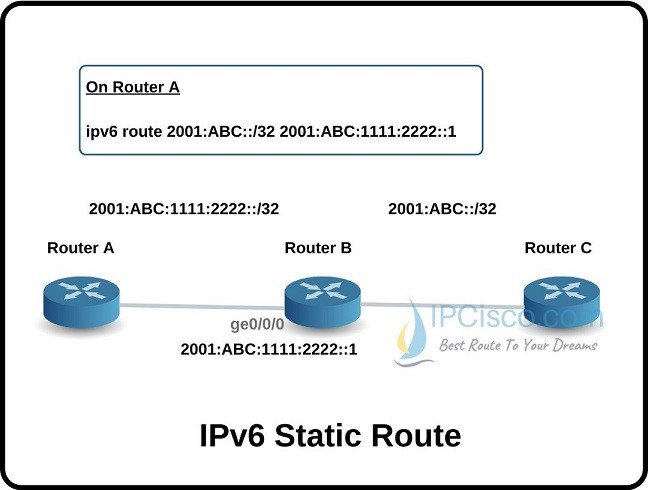Mastering IPv6 Static Routing in Packet Tracer: A Comprehensive Guide
Introduction
In the realm of networking, IPv6 has emerged as the future of IP addressing, offering a vast pool of unique addresses to accommodate the growing number of connected devices. Understanding IPv6 static routing is crucial for network administrators to efficiently manage and optimize data flow across complex networks. In this comprehensive guide, we will delve into the concept of ipv6 static routing packet tracer, a popular network simulation tool. Whether you're an IT professional or a networking enthusiast, this article will equip you with the knowledge to implement IPv6 static routing effectively, ensuring seamless communication and data transfer.

Section 1: Understanding IPv6 Static Routing
IPv6 static routing is a method of manually configuring routing tables on routers to establish a fixed path for IPv6 packets to reach their destination. Unlike dynamic routing protocols that automatically exchange routing information, static routing requires network administrators to manually define the routes. This approach is ideal for smaller networks or specific scenarios where routing changes are infrequent.
IPv6 static routing enables efficient and predictable data transfer between different subnets and networks, making it a valuable tool for network segmentation and optimization. Additionally, static routing contributes to reduced network overhead and enhanced security since it minimizes the broadcasting of routing information.
Section 2: Benefits of IPv6 Static Routing
Implementing IPv6 static routing offers several advantages for network administrators and organizations:
a. Network Control: With static routes, administrators have full control over the paths that IPv6 packets take, ensuring optimized data flow.
b. Reduced Overhead: Static routing minimizes network overhead by avoiding the constant exchange of routing information typical of dynamic routing protocols.
c. Enhanced Security: Static routes reduce the attack surface by limiting the exposure of sensitive routing information to potential threats.
d. Improved Network Performance: By defining precise paths for data transmission, IPv6 static routing improves network performance and reduces latency.
Section 3: Configuring IPv6 Static Routing in Packet Tracer
Follow these step-by-step guidelines to configure IPv6 static routing in Packet Tracer:
- Network Topology Setup: Create the network topology with routers, switches, and interconnected networks where static routing is required.
- Assign IPv6 Addresses: Assign unique IPv6 addresses to each interface of the routers and the connected networks.
- Verify Reachability: Ensure connectivity between interfaces and networks by testing pings and verifying successful communication.
- Define Static Routes: Manually configure static routes on each router using the "ipv6 route" command, specifying the destination network and next-hop interface.
- Check Routing Table: Verify the static routes added to the routing table using the "show ipv6 route" command on each router.
- Testing: Test the communication between devices in different subnets to confirm the effectiveness of the static routing configuration.
Section 4: Troubleshooting IPv6 Static Routing
If issues arise during IPv6 static routing configuration in Packet Tracer, consider the following troubleshooting tips:
a. Incorrect Next-Hop Interface: Double-check the next-hop interface specified in the static route configuration.
b. IPv6 Addressing Errors: Verify that the IPv6 addresses assigned to interfaces are accurate and error-free.
c. Verify Routing Table: Check the routing table on each router to ensure that the static routes are correctly added.
d. Interface Status: Ensure that all interfaces are up and operational to allow successful data transmission.
Section 5: Real-World Applications of IPv6 Static Routing
IPv6 static routing finds applications in various real-world networking scenarios:
a. Network Segmentation: IPv6 static routing is instrumental in segmenting large networks into smaller subnets for efficient management and performance optimization.
b. Interconnecting Branch Offices: In enterprise networks, IPv6 static routing facilitates seamless communication between branch offices.
c. ISP Networks: Internet Service Providers (ISPs) employ IPv6 static routing to maintain stable paths for data transmission to different networks.
d. Data Centers: In data centers, IPv6 static routing enables efficient data transfer between virtualized machines and networks.
Conclusion
In conclusion, mastering IPv6 static routing in Packet Tracer is crucial for network administrators to optimize data flow and communication in modern IPv6 networks. By understanding its significance and following the step-by-step guide, administrators can implement IPv6 static routing effectively, ensuring reliable and efficient connectivity across complex network topologies.
Comments
Post a Comment